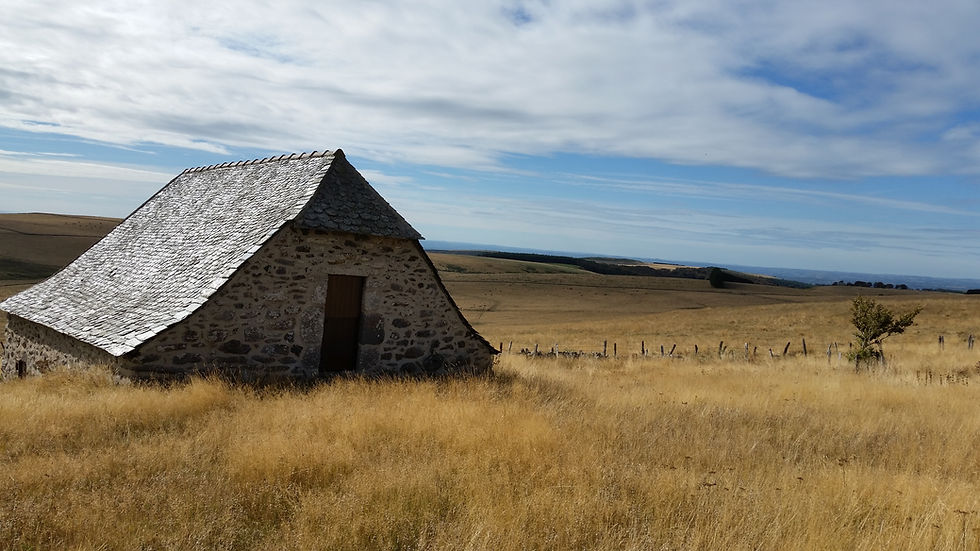
History
The development of the Aubrac breed began during the 17th century at the Benedictine Abbey of Aubrac, in the southern portion of the central Massif in France. The Abbey was founded in 1120 by a Dutch Lord, Adalard, who had narrowly escaped death twice in this wooded and remote area during his pilgrimage to Santiago de Compostello. He decided to build a monastery to feed and shelter the thousands of pilgrims passing through the area. The pilgrims were offered a meal made of bread soaked in fresh cheese, Aligot, produced from the milk of the local cattle, Aubrac, named for the region. From this time forward, the breed was used because of its hardiness, ease of management, and milking ability.
The Aubrac Abbey is situated at an altitude close to 4000 feet. When founded, it had thousands of acres of land, some situated up the mountains, some in the low lands. Every year on the 25th of May, the herds would walk to the mountain pastures. They would return to the lowlands on the 13th of October where they were housed for winter. This ‘transhumance’ still takes place on those dates today.

During the summer months in the mountains, the cows were milked in the pastures and the Aligot cheese was made in a small stone dwelling, a ‘buron’. The ‘buron’ also served as living quarters for the caretaker who milked the cows, made the cheese and trained the animals to pull a cart or other farm implement. The production of a quality cheese and the training and sale of draught cattle was the main income for these farms. The cattle were expected to produce rich, plentiful milk and be docile. In an effort to produce larger quantities of richer milk, the Brown Swiss breed was introduced but they were soon abandoned as they were not hardy enough for the Aubrac climate and terrain. It is this geographical environment that has given the Aubrac cow the ability to survive and thrive in difficult and challenging conditions. No other breed has been able to deliver the same profit margins in the same conditions.

After the French Revolution, the lands of the Abbey were offered for sale and split up into individual farms but the management of the pastures remained the same.
To encourage breeders to aim for quality, the first Aubrac breed show took place in Laguiole, France on the 25th of September 1830. The breeders were judged on the quality of the cheese they produced and the physical characteristics of the animal. The shows helped to set the standards for the breed in color, appearance and various abilities. The herd-book was established in April 1894 and every registered animal can be traced back to this book.
